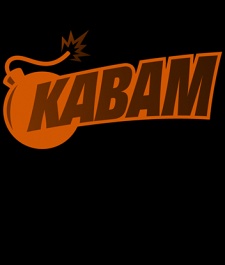So long a somewhat undefined and unpalatable group of games that sat awkwardly between casual and hardcore, mid-core is the midst of flexing its free-to-play muscle.
That's according to both Mike Sellers recently of Rumble Entertainment and Kabam Vancouver's Steven Martin who both took to the stage at GDC 2014 to not only define what a mid-core game is, but also to explain just how you make a good one.
As is customary with almost any F2P talk at any major conference, however, their words of advice were dosed with a healthy amount of caution.
"If you look at mid-core games, the top three or so titles are the big hits and disproportionately the big hits," offered Sellers.
"It's not like the games at #4 or #5 are close behind or anything. The curve actually drops off really fast."
Another startling stat this time courtesy of Swrve is is that half of mid-core revenue comes from just 0.15 percent of players. The whales, as it pained Sellers to say, are everything if healthy revenues are your aim.
Hey big spender
"The big purchasers start at $500-1,000, so you need to think about these big spenders and whether it's physically possible for them to spend that amount of money within your game," Sellers went on.
Developers frequently question whether this 'whale chasing' is morally wrong, he added, and whether other players who, while they may not generate the revenue, do make up the bulk of a game's userbase get ignored as a result.
His conclusion? It's something each developer will have to come to their own conclusion about in terms of what they're comfortable doing. The bigger problem for the mid-core, however, is an inability for developers to take creative risks.
"Right now, innovation equals risk, and the end result is so many developers end up staying close to what we already know," he concluded.
Not that tagging onto a familiar genre can't pay off. Kabam's Fast & Furious 6: The Game hit iOS and Android back in May 2013 and quickly raced to 48 million downloads having earned an Editor's Choice spot from Apple in 90 different countries.
Are you sitting comfortably?
The secret of Fast & Furious 6's success? Build your game like a stool.
According to Martin, the seat of the stool is the bulk of the game the core loop, the graphics, etc. That seat is then held up by three stools; accessibility, user directed goals and the 'late game'.
"We wanted to make sure if a player comes in and doesn't know about cars, they can just upgrade their car and it gets better," detailed Martin on accessibility.
"You don't have to worry about it all the player needs to know is, if they equip an upgrade, it'll make their car faster."
User directed goals, he explained, range from ensuring they don't enter contests they have no hope of winning retention will drop like a stone if players enter races that are above their car's capability to providing daily goals, such as 'perform 12 perfect drifts', in order to keep them playing throughout the day.

Essentially, in both Sellers and Steven's view, mastering the mid-core is about making the player feel good about what they've achieved.
The final pillar revolves around ensuring there's always a reason for players to come back, even if they've completed the story mode.
"Our game was tied to a film license, so we couldn't exactly go on just adding more plot at some point there's going to be a new movie," Steven added. "So first we launched tournaments and then PvP to keep people coming back."
And that's the key. Retention is the be-all-and-end-all for the midcore market, and finding the balance between keeping play competitive but not punishing failure is the challenge all developers must look to overcome.





















